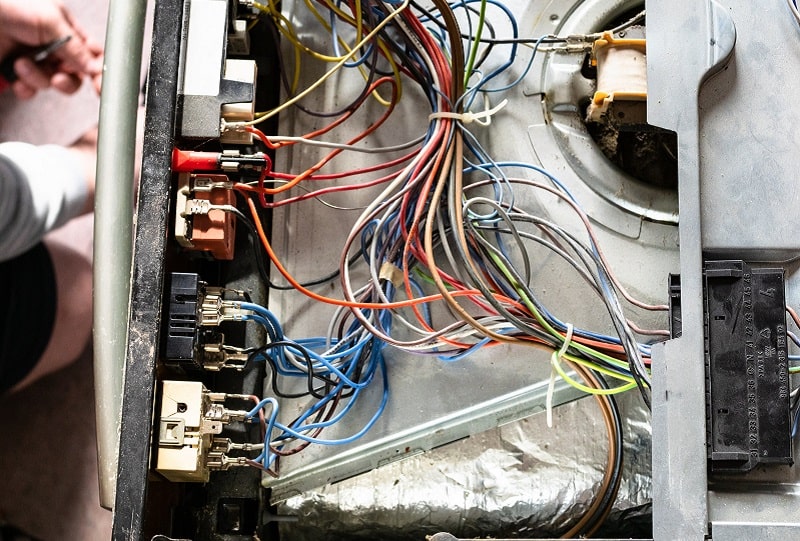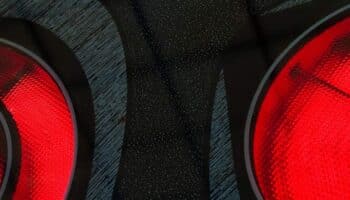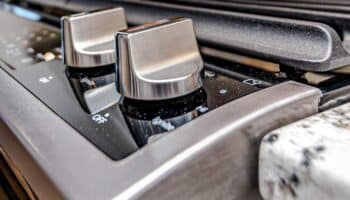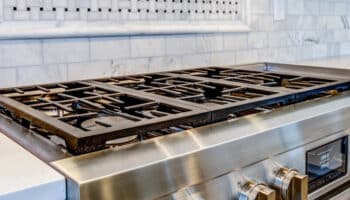Nothing is as bad as when you’re making a romantic dinner for your special one – and the stove keeps tripping the breaker!
If your circuit breaker keeps tripping every time you use the stove, especially if you live in a newly-built housing development, it could be dangerous.
What causes a stove to repetitively trip its breaker, and how can it be resolved?
I took a DEEP DIVE into this situation and researched the heck out of it. Let’s jump in together and learn about why your stove may be tripping the circuit breaker. Then, you’ll be able to get back to making that intimate dinner for two…
Stove Safety First!
Gas and electric stoves are characterized by scorching heat, explosive gas, and high electrical current. Please stay safe while troubleshooting and servicing your stove. Unplug the stove before working on it. If you’re unsure about anything involved, then stop what you’re attempting and call a certified repairman or electrician.
Why does my stove keep tripping my circuit breaker?
There are a few reasons why your stove could be tripping the circuit breaker. I’ve studied this for you and won’t make you wait until the end of this article to learn what you came to.
So, in a nutshell, here are the most common reasons why your stove might be tripping the circuit breaker:
- Stove is not on a dedicated breaker
- Stove has damaged or defective wiring
- Stove has a faulty burner control switch
- Circuit breaker is too weak or defective
- Stove is plugged into an outlet that needs replacing
OK! Let’s take a closer look at each of the possible scenarios. In no time, we will learn how to troubleshoot and repair your stove so that it stops breaking the circuit.
Ready? Let’s dive in!
#1 Stove is not on a dedicated breaker
In all cases, a stove should have its own dedicated power source. If your stove is on the same circuit as other appliances, or if you are plugging other appliances into outlets on the stove itself, that could be what’s causing the circuit to overload and trip the breaker
Microwaves, toasters, and dishwashers are also high-energy consumers and should all be on dedicated circuits. These appliances can cause circuits to overload, especially in older homes that have not had an electrical system upgrade in many years.

However, if your stove’s circuit breaker keeps tripping and you have not been using other appliances on the same circuit, the problem likely lies elsewhere – like having damaged, kinked, corroded, or otherwise defective wiring.
#2 Stove has damaged or defective wiring
ALWAYS unplug your stove before inspecting its wiring. You don’t want to get shocked!
Take a close look at the visible wiring on your stove. Do you notice any scorch marks, frayed wiring, or other damage? Do you see any corrosion on the wiring?
Even if all the wiring appears in good shape from what you can see, it’s possible that the wiring inside the stove has incurred damage or corrosion.
Various wires are running through a stove. Each burner element needs power as well as the stove’s upper and lower elements. Stoves also have fans, ignitors, display lights, and other accessories that require electric wiring.
Most of a stove’s wiring is kept hidden for safety and aesthetics. So you may need to reposition the stove and remove some panels to expose the wiring you’re attempting to troubleshoot.

Even though most of a stove’s wiring is hidden, it can still become damaged and malfunction. For example, the wiring could have been kinked or impacted during a move. Or a power surge may have caused damage to the wiring.
Damaged wiring in your stove can cause short-circuiting, which will definitely cause the circuit breaker to repetitively trip.
During your wiring inspection, don’t forget to check out the burner elements and the ports they plug into. If you have little or no experience in electrical wiring, it will definitely be in your best interest to call a professional appliance repairman or licensed electrician.
#3 Stove has a faulty burner control (infinite) switch
Most stoves operate with “infinite switches”, which are turnable switches that produce variable power output to the stove’s burner elements.
They are called “infinite” because they accommodate an infinitely variable electrical output, instead of being limited to only a few definitely set positions. The further you turn the knob, the more heat is generated and sent to the burner elements.
Infinite switches are equipped with bi-metallic conductive connectors that traverse electrical terminals to make connections.
When excessive heat passes through the bi-metal connection, the connectors deform, which causes disconnection. Then, as the bi-metal connector cools down, the connection is reestablished.
In most cases, when an infinite switch fails, it will either stick the burner on its highest heat setting or cause the burner to not heat up at all. In either case, the circuit breaker may “sense” that there is an issue and cause the circuit to disconnect.
Replacing a burnt infinite switch is a relatively straightforward process. You’ll need to read your owner’s manual or contact the manufacturer and order the new part.
Again, you should always unplug the stove before servicing it. If you are unsure about what you’re attempting, please stay safe and call a professional!
#4 Circuit breaker is too weak or defective
It doesn’t have to be your stove that’s causing the breaker to trip. It could be an issue with the breaker or the breaker panel.
If your breaker panel box is old, it could be rusted or otherwise corroded or damaged. There may be moisture in the space where the breaker box is located, and that moisture could be causing electrical anomalies that cause the breaker to trip.
If you need a new breaker box installed, you’re most likely going to need to call a professional electrician. It’s very important to know what you’re doing on projects like that because it can lead to a house fire if done improperly!
It’s also possible that the breaker controlling the circuit your stove is on is not strong enough. Most stoves require either a 40-amp or 50-amp dedicated breaker. So, if you are using a breaker that is rated less than 40 amps, that could be causing the breaker to repetitively trip.
Consult your owner’s guide or call your stove’s manufacturer to determine the correct size of breaker to use. Replacing a breaker is a much simpler task than, say, rewiring the stove.
So it’s not such a bad thing. Just be sure to shut off the Main Breaker before you attempt the replacement. And it’s always better to have someone with experience do this type of task for you.
#5 Your stove’s outlet may be damaged or defective
You can visually inspect for obvious signs of damage, like scorching or melted plastic. However, it may require an electrical testing tool to accurately diagnose the outlet in question.

Summary
It’s important to be able to make those romantic dinner-for-two’s now and again. Our stoves are central to our health and happiness at home, and that’s why it’s important to understand why your stove may be continually tripping the breaker.
I hope this guide helped you to figure out why your stove’s circuit breaker has been misbehaving. The problem could be in the stove’s wiring, a defective infinite switch, moisture in the breaker panel, a damaged or defective outlet, or a breaker that’s too weak to get the job done correctly.
Please understand that any electrical anomaly is important to address thoroughly and efficiently. A house fire or electrocution is NOT what we want!
If you do attempt ANY type of inspection or repair on your stove, its dedicated breaker, the breaker box, or an electrical outlet, PLEASE be safe and ensure that the power supply is cut OFF before beginning.
Thank you very much for reading this guide, and please check out some of our other helpful articles below. And remember, Safety First!







